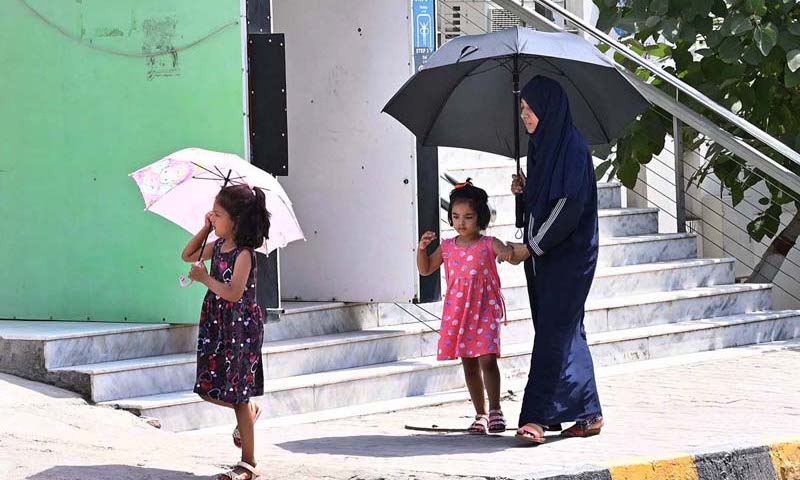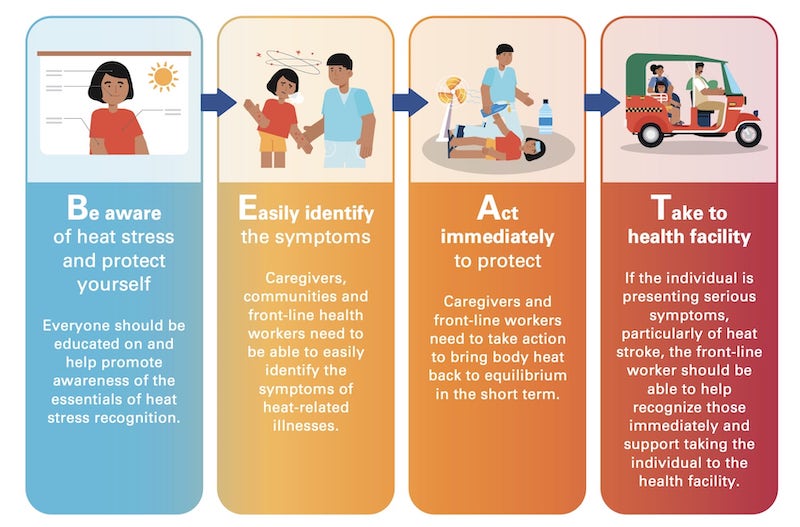Nearly half a billion children in South Asia are exposed to extremely high temperatures as life-threatening heat waves are becoming frequent and more severe, according to the United Nations’ children’s agency UNICEF.
In a news release, UNICEF said its analysis of 2020 data showed that an estimated 460 million or 76% of children under 18 in South Asia are exposed to extreme high temperatures where 83 or more days in a year exceed 35° Celcius. This means that 3 in 4 children in South Asia are exposed to too high temperatures compared to only 1 in 3 children (32%) globally.
The data also revealed that 28% of children across South Asia are exposed to 4.5 or more heatwaves per year, compared to 24% globally.
The month of July, the hottest ever recorded globally, further raised concerns about the health and future of children living in South Asia.
Which countries are at high risk?
Children in Afghanistan, Bangladesh, India, Maldives, and Pakistan are at ‘extremely high risk’ of the impacts of climate change, according to UNICEF’s 2021 Children’s Climate Risk Index (CCRI).
“Countries in the region are not the hottest in the world right now but the heat here brings life-threatening risks for millions of vulnerable children,” said Sanjay Wijesekera, UNICEF regional director for South Asia. “We are particularly concerned about babies, toddlers, malnourished children and pregnant women as they are most vulnerable to heat strokes and other serious effects.”
Extreme Weather
In Pakistan’s southern Sindh province, about 1.8 million people were exposed to temperatures of 40 degrees Celsius (104 F) and higher, UNICEF said. These conditions increased the short and long-term health risks, including dehydration and organ failure.

Some regions in Pakistan, including Jacobabad, the world’s hottest city in 2022, saw similarly high temperatures, raising fears, especially for laborers who spend hours toiling outdoors and for poor populations with little to no cooling options.
The scorching heat comes a year after the devastating floods which left one-third of the country underwater during the monsoon rains from mid-June to September 2022. More than 800,000 children in flood-affected areas were at risk of severe heat stress in June 2023.
India has also experienced a heat wave that saw temperatures in the capital New Delhi exceed 40 degrees Celsius for consecutive days. In some states, the heat led to the closure of schools, damaged crops, putting pressure on energy supplies. Officials have warned residents to remain indoors and keep hydrated.
The high temperatures have increased the risk of symptoms and illnesses such as higher body temperature, rapid heartbeat, cramps, severe headache, confusion, organ failure, dehydration, fainting and coma, in young children and poor mental development in infants; and developmental setbacks such as neurological dysfunction, and cardiovascular diseases.
“Young children simply cannot handle the heat,” added Wijesekera. “Unless we act now, these children will continue to bear the brunt of more frequent and more severe heatwaves in the coming years, for no fault of theirs.”
How to tackle heat and protect kids?
For young children, ice packs, fans, or misting with water can help lower their body temperature, while cold water immersion can help older children, according to the UN agency.
During high temperatures, UNICEF urges frontline workers, parents, families, caregivers and local authorities to protect children and B.E.A.T. the heat by taking the following steps:


